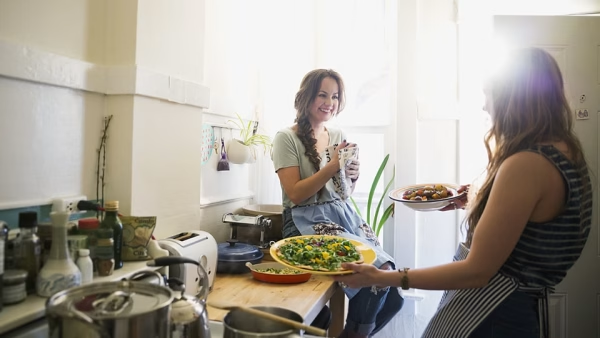Your 14-day self-isolation grocery guide
Trying to reduce trips to the supermarket?


If you found yourself falling into the trap of panic buying this year, you’re not alone. Images of bare supermarket shelves on social media fuelled widespread fear across the country, leaving stores scrambling to keep up with demand – and many of us confused about what we should be buying.
Even though food shortages have mostly eased since the pandemic first broke out, shortages and restrictions are still possible so long as COVID-19 continues to be a threat to the community. Being organised with your supermarket trips can help you maintain supplies of the food your family needs, says accredited practising dietitian and nutritionist, Jaime Rose Chambers.
Stocking up on a few supplies – without going overboard – is a good idea, to limit the number of trips you have to make to the supermarket.
“These items might include tinned fish, tinned fruit and vegetables like beans, legumes, asparagus and beetroot, and freezer items like meat and fish, berries, peas, corn and spinach,” Jaime suggests. “Continue to buy your fresh food as it is available, such as milk, bread, fruit and vegetables.”

Making a 14-day food plan
When organising her meal plan for the next fortnight, Jaime maps out the meals and snacks for each day based on how her family typically eats, filling them in “almost like a puzzle”. To make lunches easier, she cooks extra portions of dinner to use as a base for midday meals. Here are the ‘puzzle pieces’ to factor in when you create your 14-day meal plan:
1 Start with meals that use fresh fruit and vegetables. “That might include fresh berries, ripe bananas, tomatoes, avocado and leafy greens like spinach,” she says.
2 Hit your fruit and veggie targets. “Aim for half your lunch and half your dinner to be a variety of different coloured vegetables – this might be roasted, as a salad, steamed, stir-fried or cooked into a stew or soup, and have a couple of servings of fruit each day – this might be fruit added to porridge or cereal or as a snack or dessert.”
3 Rotate your proteins. “For example, if dinner is your main meal of the day, cycle through with chicken one night, eggs the next, then a red meat like beef, then fish, then a vegetarian meal and so on,” Jaime says. “Most of these foods – aside from eggs – can be frozen or are tinned so you don’t have to worry about getting through them quickly.”
4 Fill in meals with carbs. “It might be wholegrain crackers or bread with your lunch and it might be brown rice or sweet potato with your dinner, for example,” she says.
5 Get your fill of dairy. “Aim for three serves per day,” Jaime advises. “This can be milk or yoghurt added to your breakfast or in a smoothie, or as a snack – such as a tub of yoghurt or a milky coffee – or cheese on crackers, on toast or grated over your meal.” Concerned about shelf life? Jaime says refrigerated yoghurt usually lasts at least two weeks, and you can buy a long life carton of milk when your fresh milk runs out during the fortnight.
6 Don’t forget healthy fats. “Use extra virgin olive oil where you can,” she says. “Drizzle liberally over salads, use for cooking and over cooked vegetables. Add avocado, nuts and seeds to salads and stir fries, and use as a paste on toast and crackers.”
Related: Food poisoning and leftovers: How long can I store leftovers in the fridge?
How to fuel your body in your 20s, 30s and beyond
Learn how to up your intake of healthy foods on a budget
What fruits & vegetables are in season in summer?
The fruit and vegetables to put on your menu this season
How to become a better cook
It’s never too late to learn new cooking techniques!
Jaime Rose Chambers
Jaime Rose Chambers is an accredited practising dietitian, nutritionist and aspiring cook, who is passionate about how food affects our bodies and our health. With two small children in tow, she has published several best-selling books and has special expertise in intermittent fasting. Jaime likes her coffees BIG, as to delay the sadness she feels when they're empty.




